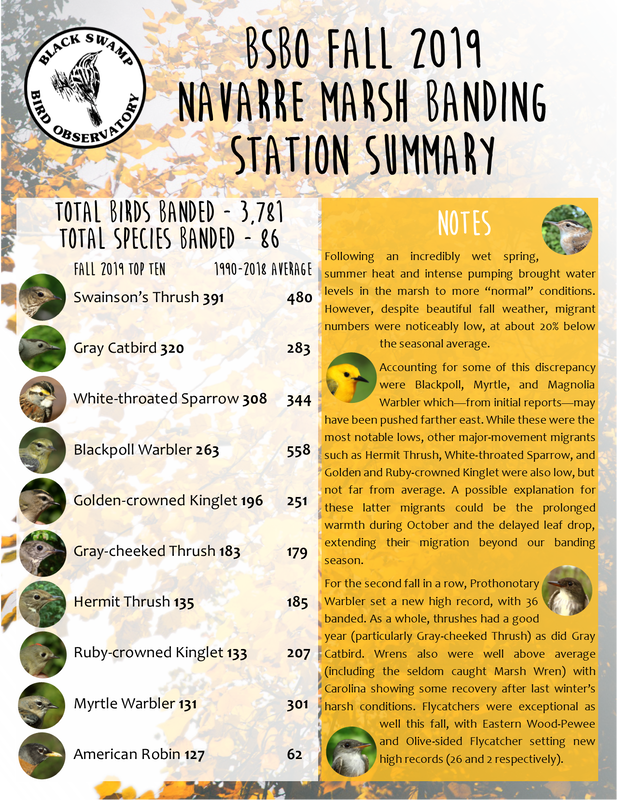Enjoying our blogs?Your support helps BSBO continue to develop and deliver educational content throughout the year.
|
|
Following an incredibly wet spring, a combination of summer heat and intense pumping brought water levels in the marsh to more “normal” conditions. However, despite beautiful fall weather, migrant numbers through the marsh were noticeably low, at about 20% below the seasonal average.
Accounting for some of this discrepancy were our major-movement neotropical migrants – specifically Blackpoll, Myrtle, and Magnolia Warbler – which (from initial reports) may have been pushed farther east this fall. While these were the most notable lows, other major-movement migrants including Hermit Thrush, White-throated Sparrow, and Golden and Ruby-crowned Kinglet were also low, but not far from average. A possible explanation for these latter migrants (which are short-distance migrants) could be the prolonged warmth during October and the delayed leaf drop, extending their migration beyond our banding season. While overall numbers may have been lackluster, there were multiple species that were well represented this season. For the second fall in a row, Prothonotary Warbler set a new high record, with 36 banded, shattering last year’s 26 and going way beyond the average of 8. As a whole, thrushes had a good year (particularly Gray-cheeked Thrush) as did Gray Catbird. Wrens also were well above average (including the seldom caught Marsh Wren) with Carolina showing some recovery after last winter’s harsh conditions. Flycatchers were exceptional as well this fall, with Eastern Wood-Pewee and Olive-sided Flycatcher setting new high records (26 and 2 respectively). Although numbers were mostly low this fall, it is only one season and does not necessarily represent any particular trend. Seasons such as this only stress the importance of long-term monitoring, set protocols, and region-wide collaborations such as the Midwest Migration Network. We would like to thank our dedicated corps of volunteers and seasonal techs that put all their effort into ensuring a successful banding operation; for both data quality and bird safety. We couldn't do it without all your support! We would also like to thank Ottawa National Wildlife Refuge for their continued support of this project (both in research and housing for techs) and Davis–Besse Nuclear Power Station and FirstEnergy for preserving and allowing access to this incredible habitat.
0 Comments
Your comment will be posted after it is approved.
Leave a Reply. |
AuthorsRyan Jacob, Ashli Gorbet, Mark Shieldcastle ABOUT THE
|
